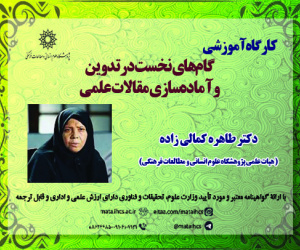ساختار مالکیت، کیفیت حسابرسی و مدیریت سود واقعی- شناخت اثرات متقابل هم زمان (مقاله علمی وزارت علوم)
درجه علمی: نشریه علمی (وزارت علوم)
آرشیو
چکیده
مهمترین ویژگی شرکت های سهامی تفکیک مالکیت از مدیریت بوده و لذا نقش مکانیزم های حسابرسی مستقل بر فعالیت مدیران، در راستای حاکمیت خوب شرکتی محرز می نماید. سود خالص نیز در تصمیم گیری استفاده کنندگان صورت های مالی تأثیر گذار بوده و لذا برای مدیران اعمال مدیریت سود فعالیتی محتمل می نماید. همچنین ارتباط بین مدیریت سود و کیفیت حسابرسی نیز بصورت تئوریک معنی دار می نماید. مطالعه حاضر به بررسی اثرات متقابل همزمان بین ساختارمالکیت، کیفیت حسابرسی و مدیریت سود می پردازد. بدین لحاظ سه نوع مالکیت حقیقی، مدیریتی و نهادی را در ساختار مالکیت، کیفیت حسابرسی مستقل به عنوان مکانیزم نظارتی و مدیریت سود واقعی را در قالب سه دستگاه سه معادله ای مجزا و با استفاده از روش های حداقل مربعات سه و دو مرحله مرحله ای در بین 167 شرکت و در بین سال های 1392-1398 مورد بررسی قرارداده است. نتایج نشان میدهد که با افزایش درصد هر سه نوع مالکیت احتمال وقوع مدیریت سود کاهش می یابد و وقوع مدیریت سود نیز به کاهش هر یک از سه نوع مالکیت می انجامد. همچنین کیفیت حسابرسی و ساختارهای مالکیت بصورت همزمان و متقابل بر یکدیگر تاثیر معنی دار مثبتی داشته اند. در نهایت مدیریت سود و کیفیت حسلبرسی اثر متقابل همزمان منفی بر یکدیگر داشته و افزایش هر یک به کاهش متغیر دیگر می انجامد.Ownership Structure, Audit Quality, and Real Profit Management - Recognizing Simultaneous Interactions
The most important feature of joint stock companies is the separation of ownership from management and therefore the role of independent audit mechanisms on the activities of managers, in line with good corporate governance. Net profit is also influential in the decision making of users of financial statements and therefore is a potential activity for managers of profit management practices. The relationship between earnings management and audit quality is also theoretically significant. The present study investigates the simultaneous interactions between ownership structure, audit quality and profit management. In this regard, three types of real, managerial and institutional ownership in the ownership structure, the quality of independent auditing as a supervisory mechanism and real profit management in the form of three separate three-equation systems using three- and two-step least squares methods in It has been studied among 167 companies between 1392-1392. The results show that with increasing the percentage of all three types of ownership, the probability of profit management decreases and the occurrence of profit management leads to a decrease in each of the three types of ownership. Also, audit quality and ownership structures have had a significant positive effect on each other simultaneously and reciprocally. Finally, profit management and audit quality have a simultaneous negative interaction with each other and increasing each leads to reducing the other variable.









